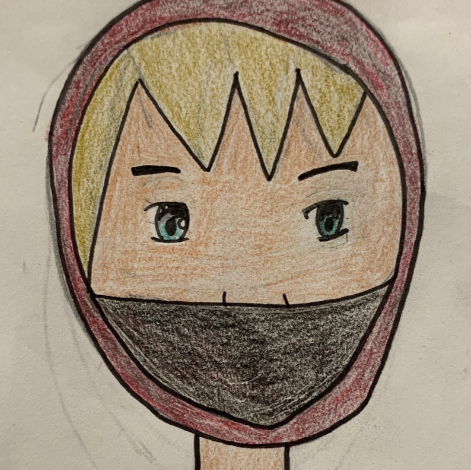Social-emotional learning in Special Education: Find the spark and fan the flame

by Sean Delpha
I work with students who learn differently. Teaching social-emotional learning in special education settings is incredibly rewarding. The students benefit greatly from diversification in how they are taught and the human connections we make. In one classroom I’ve supported this year, a group of students who are usually integrated into a neurotypical classroom haven’t had that opportunity due to COVID-19 restrictions. This has been an added challenge for their social-emotional development.
The students in this class display a beautiful array of intelligences. Each one of them has their interests, their gifts and even their self-doubts. As an empathetic human, I work to encourage in people the further development of the self, of ambitions, dreams, talents, and overall wellbeing. As an SEL Enrichment instructor, I embrace my responsibility of teaching the students how to see the power they all hold, how to tap into it, and how to share it with others.
An artful connection
As in all classes, teaching social-emotional learning in special education classes starts with building strong relationships with my students. One particular student in this class, a 12-year-old girl I’ll call Sha’kaysia, has a drive to learn how to draw better. On the first day of school, Sha’kaysia learned that I am an artist. Quietly, she showed me a drawing of her own, and hesitantly asked me what I like to draw. In her timid question, I saw a spark. I knew this was an incredible opportunity to open up a dialogue between myself and the student. Responding to her interest, I found a safe avenue for her to travel in the form of communication, relationships, and expression. I eagerly started down that road, and worked to engage Sha’kaysia in conversation about her art.
Creating social-emotional learning opportunities
Throughout the year, I have nurtured my relationship with Sha’kaysia through our art connection. I recognize her drawings, compliment her efforts, and listen to her thoughts about how she views her work. I provide encouragement, adding fuel to her fire. From there, I find ways to weave in social-emotional lessons with artistic flair to assist in her growth. Since many of the students in her class enjoy drawing, I’ve started implementing drawing days into my lesson plans.
On these drawing days, we follow along with a video from the YouTube channel Art for Kids Hub. This channel provides easy-to-follow, step-by-step tutorials on drawing. Frequently, I build in opportunities for social-emotional learning by pausing the video. I ask where the students are at, and if they need any help. I try to fan the spark with a little conversation about whatever the creative act has ignited in them. Modeling how to be an empathetic listener, I prompt the students to respond to each other and reflect on their drawing to help them build communication skills and empathy for each other. As we continue the tutorial, I walk around the room to magnify the great things I see in their drawings. Throughout the process, I give positive encouragement to feed their passion and process.
Reaping the rewards
As the year has progressed, Sha’kaysia has become much more vocal about her enjoyment of drawing. Her family even gifted her a drawing book, which she loves. Using the book, she is digging into the process of improving her craft. Watching her grow as a confident artist and communicator is inspiring. Just yesterday, Ska’kaysia came up to me and showed a drawing of an anime face she was working on from her drawing book. Previously, she would show her drawings and point out flaws. This time, however, she talked about the technique she used and that she thought it looked really good. To see and hear her describe her work in a positive way proved that the spark had caught hold.
Teaching social-emotional learning in a Special Education classroom has been an incredible experience. Social-emotional learning can be seamlessly integrated into the fabric of an already complex and sophisticated school system. It does not feel like extra work, but rather a key component in the balance of a full human education. By connecting with Sha’kaysia through art, I have seen her more eagerly share her inner beauty with others. As teachers, we remember the moments that change us, the moments – regardless of what the subject is – when we meet the student where they are, and help them see what is already there. When our students unlock their own peaceful power, we all reap the rewards.
About the Author
Sean Delpha’s time with Peaceful Schools has been an evolving journey, starting in 2017 as a Support to our Enrichment Instructors at Lincoln Middle School in the Syracuse City School District. He currently teaches Comics and Creative Writing Enrichment at H.W. Smith K-8 School. Sean is a father and husband, inspired by the unknown with an urgency to share and learn.




